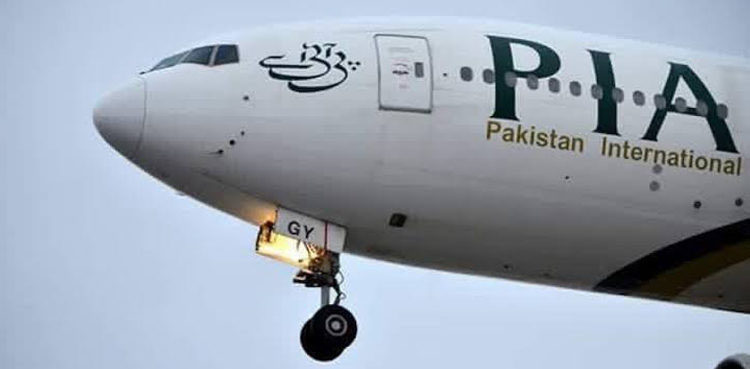Salman Sikandar lists the tragic history of PIA plane crashes
On May 20, 1965, the people were celebrating Pakistan International Airline’s inaugural flight (PK-705) to Cairo, Egypt, which was to take off that day. PIA was set to achieve a milestone with this flight. As many as 128 people, including cabin crew, senior military officers, journalists, businessmen and adventurers were booked on this flight. Everyone was excited; including Shaukat A Macklai, a travel agent, who was on board with his wife. They were going for their honeymoon. Everyone boarded on the Boeing 720B with a sense of anticipation; they were the first people travelling to Cairo through PIA.
Macklai played bridge with his wife and a friend until the flight stopped at its first stop in Dhahran, Saudi Arabia. After a short stay there, the flight then departed for Cairo.
The plane reached Cairo Airport and was about to land. Macklai and his wife started packing their handbags and were talking about the first place to go in Egypt when the plane crashed suddenly – just short of the runway.
Macklai tells daily DAWN about this moment: “I remember seeing the right wing on fire before I blacked out. I was still semi-conscious when I opened my eyes again and didn’t realise that I was screaming out my own name ‘Shaukat! Shaukat!’ instead of calling for help. Another passenger, a young man himself bleeding from the head, came to my rescue. I was badly hurt but he pulled me out of the wreck. There were dead bodies and luggage lying all around us. I saw my wife’s lifeless form among them. My eyes saw but there was no reaction.” Only six people survived, including Macklai.

People demanded investigations, the government agreed but till today, no one could ever explain the abnormal descent of the plane. The file was closed.
This was not the first flight to have reached this unfortunate ending in the history of PIA, and it certainly wasn’t going to be the last one. With each new crash the similar exercise of starting the investigation and then burying the files under the dust of time was repeated.
PIA, which started under the name of Orient Airways in 1946, has a bittersweet history. It was bought by two wealthy businessmen Mirza Ahmed Isphahani and Adamjee Dawood, becoming the first airline owned by Muslims in British India.
After Partition in 1947, it moved its operations to Pakistan and started flights between East and West Pakistan. Due to multiple reasons, Oriental Airlines had to be subsidised by the government which paved the way for it becoming Pakistan International Airlines in 1955.
Soon, PIA launched new domestic routes but its first major success was the inauguration of an international route: Karachi to London. The decade 1960s saw considerable rise in PIA’s profitability and many new routes were launched, including the transatlantic route Karachi-New York via London. PIA also became the first flight from a non-communist country to fly to China and Moscow.
At the same time, this decade saw three PIA plane crashes, including PK-705 Karachi-Cairo. PIA’s rise to the glory was marked with a dark side of crashes and loss of lives.
With the launch of many new routes and addition of new aircraft, the next decade continued the successful story of PIA. Yet the end of this decade saw a considerable fall from glory due to political instability and the imposition of martial law.
November 26, 1979 sealed the downfall of PIA when PK-740 crashed near Jeddah, with all 156 passengers killed. It was one of the biggest tragedies in the history of Pakistan. Despite these setbacks, PIA made a wonderful return with the highest profits ever from 1981 to 1984 in its history.
The airline, in 1985 also assisted Dubai in the establishment of Emirates Airlines, which would itself become a leading airline of the world in the next few decades.
Yet the most unforgettable and mysterious incident took place in 1989. On August 25, 1989, PK-404 took off from Gilgit carrying 54 passengers. It was to land at Islamabad airport in a few hours.
But soon after taking off, the plane disappeared from the radar. A number of operations were launched for the recovery of this plane’s wreckage but it could not be found. With silence of governments on this case, to this day it remains one of the biggest mysteries in the history of PIA and world aviation.
Thus began the continuous downfall of PIA. The airline failed to pay its workers and even pilots went on strike, demanding salaries. PIA began losing credibility but it had to experience its worst ever tragedy yet.
In September 1992, PK-268 took off from Karachi Airport for Nepal. It was boarded by 167 passengers, including crew members. Just as it was landing at Tribhuvan International Airport, the plane crashed in the mountains nearby. All 167 people on board were killed. It became the deadliest crash on the Nepalese soil, and in the history of PIA. The investigation was closed soon after labelling it as a “pilot’s error.”

The downfall was expedited by the war on terror after 9/11. Many countries banned PIA due to security fears. As a result of continuous losses, the airline stopped adding new fleets and continued its domestic and international operations with old planes. Another plane crashed in Multan taking many lives in 2006. The investigation revealed that it happened due to the “ageing plane.” As a result, 33 planes of the PIA were banned by Europe and America citing safety concerns. The glorious days of this airline were already decades behind; now it was struggling to recover. General Musharraf’s regime saw this as an opportunity and the first attempt to privatise it. This was vehemently opposed by employees of PIA and the people of Pakistan. Since then, multiple governments have tried to privatise the enterprise.
The sad history of accidents, too, continued. In December 2016, a PIA plane crashed after taking off from Gilgit, killing many people including musician and philanthropist Junaid Jamshed. Amidst the chaos of privatisation, profits, losses and recovery just after four years another sad incident happened on May 22, 2020 killing almost a hundred innocent people.
The once top airliner of the world has now become one of the most dangerous in the world. As a matter of fact the tragedy of PIA is not over yet, at least after the Karachi incident the attitude of Arshad Malik, director of PIA was telling this sad fact that the tragedy still continues. He, instead of taking responsibility of the incident, evaded media’s questions by calling it “God’s will.”
Instead of thoroughly investigating the disasters, the only alternative government has is the privatisation of PIA. This is what Naomi Klein calls “disaster capitalism” i.e. capitalism taking benefit from every disaster. Yet there are airlines in the world which are owned by states and are of top quality. This tells us that there are other solutions rather than just handing over peoples’ owned airlines to private ownership.
The Students’ Herald News Desk focuses on reporting the latest news regarding student politics and campus updates to you.
The News Desk can be reached at admin@thestudentsherald.com




